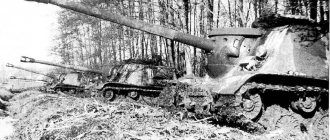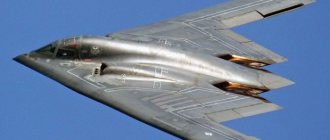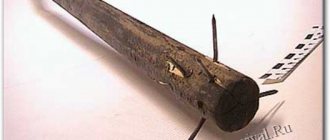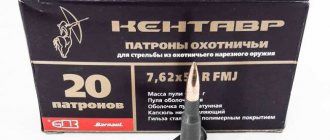Pictogram for designating explosives according to the GHS marking system[1]
Explosive
(
explosive
) - a condensed chemical substance or a mixture of such substances, capable, under certain conditions under the influence of external influences, of a rapid self-propagating chemical transformation (explosion) with the release of a large amount of heat and gaseous products[2][3][4][5] [6][7]. Depending on the chemical composition and external conditions, explosives can turn into reaction products in the modes of slow (deflagration) combustion, fast (explosive) combustion or detonation. Therefore, traditionally, explosives also include compounds and mixtures that do not detonate, but burn at a certain speed (propellant powders, pyrotechnic compositions)[4][7]. Explosives belong to condensed energy systems[8].
Content
- 1 The physical nature of explosive transformation
- 2 Historical background
- 3 Terminology
- 4 General characteristics
- 5 Applications 5.1 Military applications
- 5.2 Industrial applications
- 5.3 Scientific applications
- 6.1 By composition
Basic properties of explosives
Their main properties are:
- susceptibility to external influences;
- brisance;
- characteristic state of aggregation;
- the amount of energy released during an explosion;
- chemical resistance;
- rapidity of detonation;
- density;
- explosiveness;
- duration and circumstances of the working condition.
Each explosive can be described in detail using all its characteristics, but in most cases two of them are used:
- Brisance (break, crush, shatter). That is, this is the ability of an explosive to produce destructive effects. The higher the brisance, the faster the gases are formed during the explosion and the explosion occurs with greater force. As a result, the shell of the projectile will shatter well, the fragments will scatter at high speed, and a strong shock wave will occur.
- High explosiveness is a measure of the performance of an explosive that performs destructive, throwing and other actions. The main influence on it is the volume of gas released during the explosion. A huge amount of gas can carry out great work, for example, throwing concrete, soil, bricks out of the explosion area.
High explosives with high explosiveness are suitable for blasting in mines, when eliminating ice jams, and constructing various pits. When making shells, attention is first paid to high explosiveness, and high explosiveness recedes into the background.
The physical nature of explosive transformation
The explosive transformation, as a rule, is short-term in nature, occurs at temperatures from 2500 to 4500 K and is accompanied by the release of a huge amount of high-temperature gases and heat [7][9]. An explosive reaction does not require the presence of an oxidizing agent (usually oxygen) in the surrounding air, since it is contained in a chemically bound form in the ingredients of the explosive[7].
It is worth noting that the total amount of energy that is released during an explosion is relatively small and is usually five or six times less than the calorific value of petroleum products of the same mass[2][7]. However, despite the modest energy output, the enormous reaction rate, which, according to Arrhenius’ law, is a consequence of high temperature, ensures the achievement of high power values [7].
The release of large amounts of combustion gases is considered another sign of a chemical reaction in the form of an explosion[7]. At the same time, the rapid transformation of the explosive into high-temperature gases is accompanied by an abrupt change in pressure (up to 10-30 GPa), which is called a shock wave [7]. The propagation of this wave promotes the transfer of energy from one layer of explosive to another and is accompanied by the excitation of a similar chemical reaction in new layers. This process was called detonation, and the shock wave initiating it became known as a detonation wave [7].
There are a number of substances capable of non-chemical explosion (for example, nuclear and thermonuclear materials, antimatter). There are also methods of influencing various substances that lead to an explosion (for example, a laser or an electric arc). Such substances are not usually called “explosives.”
Historical reference
Man has been developing and studying explosives, coupled with the possibilities of their practical application, for quite a long period of time. Historically, the first prototype of modern explosives can be considered the so-called. "Greek fire"; The authorship of this invention is attributed to a Greek named Kallinikos, and the date of creation of the composition is given as 667 AD. e. This substance was subsequently used by various ancient peoples of Europe and the Middle East, but during the historical process the recipe for its manufacture was lost; it is assumed that the “Greek fire” consisted of sulfur, resin, salt and quicklime. A feature of this explosive was that the fire intensity increased when an attempt was made to extinguish the flame caused by it with water. Some time later, in 682, the first prototypes of black gunpowder were developed in China, which included saltpeter, sulfur and wood powder[5]; The mixture was initially used in pyrotechnics, and then acquired military significance.
As for European countries, gunpowder began to be mentioned in historical documents from the 13th century [5] (approximately 1250), although historians do not have accurate information about who exactly acted as the discoverer of this explosive. Among the possible candidates in specialized studies, the names of Berthold Schwartz and Roger Bacon are mentioned, in particular, and Italian experts believe that the first use of gunpowder should be associated with the city of Bologna at the beginning of the century (1216).
There is also evidence that this explosive in its Chinese version was used by the Mongol conquerors under the leadership of Genghis Khan, who used it to undermine fortress walls during siege. This fact allows some researchers to argue that gunpowder was used primarily to create explosive weapons, and only then - firearms. Some time later, at the beginning of the 14th century, the explosive in question found use in artillery, ensuring the throwing of shells from guns[5]; it is known that towards the end of the same century, in 1382, cannons were used against the troops of Khan Tokhtamysh, who were besieging Moscow. In addition, the appearance of the first examples of handguns also dates back to the 14th century: gunpowder guns were first used in Rus' in 1389, also during the defense of Moscow. It should be noted that, although gunpowder was mainly used in military affairs, attempts were made to adapt the capabilities of this explosive for peaceful purposes: for example, in the first third of the 17th century in Hungary (according to other sources - in Slovakia[5]) it was first used tested in mining operations, and subsequently the corresponding technology also spread to road and tunnel construction. Around the same time, the technology for producing artillery grenades began to be mastered, that is, equipping artillery cannonballs with a powder charge[5].
Explosion of the American cruiser Maine in Havana Bay
For several centuries, traditional black powder remained not only the only type of gunpowder, but generally the only explosive known to man, although during this period of time certain attempts were made to improve it. In Russia, for example, relevant research was carried out by M. V. Lomonosov, who in the middle of the 18th century prepared a specialized scientific work - “Dissertation on the birth and nature of saltpeter” (1749); in this work, the explosive decomposition of gunpowder was first described and interpreted scientifically. In parallel, similar questions were studied in France by chemists A.L. Lavoisier and C.L. Berthollet, who by the beginning of the last quarter of the same century developed the formula for chlorate gunpowder; in its composition, instead of nitrate, potassium chloride (“Berthollet’s”) salt was used. However, black powder continued to be used by the military until the second half of the 19th century, where it was actively used mainly for equipping artillery propellant charges, explosive shells, in the construction of underground mines, etc.[3]
The next stage in the development of explosives is associated with the end of the 18th century, when “explosive silver” was discovered, which was characterized by a fairly high level of danger for that time. At the same time, in 1788, picric acid was obtained, which found application in the manufacture of artillery shells. Scientific consensus attributes the discovery of “mercury fulminate” to the British explorer E. Howard (1799), but there is information about its invention at the end of the 17th century[5]. Despite the fact that its ability to detonate has not been studied in detail[5], in terms of its basic characteristics, mercury fulminate had certain advantages over traditional black powder. Then, at the end of the first third of the 19th century, pyroxylin was obtained by mixing wood with nitric and sulfuric acids, which also added to the arsenal of explosives known to man and served to create smokeless gunpowder. In 1847, the Italian chemist A. Sobrero first synthesized nitroglycerin, the problem of instability and unsafety of which was subsequently partially solved by A. Nobel by inventing dynamite. In 1884, the French engineer P. Viel proposed a recipe for smokeless gunpowder[5]. In the second half of the century, a number of new explosives were created, in particular - TNT (1863), hexogen (1897) and some others, which found active use in the production of weapons [5] [10], but their practical use became possible only after the invention Russian engineer D.I. Andrievsky in 1865 and Swedish inventor A. Nobel in 1867 of the explosive detonator cap [5]. Before the advent of this device, the domestic tradition of using nitroglycerin instead of black powder during blasting operations relied on the explosive combustion mode [5]. With the discovery of the phenomenon of detonation, high explosives began to be widely used for military and industrial purposes[5].
Among industrial explosives, gurdynamites were initially widely used according to A. Nobel’s patents, then plastic dynamites and powdered nitroglycerin mixed explosive compositions[5]. It is worth emphasizing that the first patents for some recipes for ammonium nitrate explosives were obtained by I. Norbin and I. Olsen (Sweden) in 1867, but their practical use for ammunition and industrial purposes fell during the First World War [5 ]. Since this type of explosive has proven to be much safer and more economical than traditional dynamite, the scale of its use in industrial applications has grown significantly since the 30s of the 20th century[5]. After the Great Patriotic War, on the territory of the Soviet Union, ammonium nitrate blasting compounds (initially in the form of finely dispersed ammonites) became the dominant type of industrial explosives[5]. Abroad, the process of massive re-equipment of industry from dynamite to ammonium nitrate explosives began around the 50s of the 20th century[5].
Since the 70s of the 20th century, the main type of industrial explosives has become the simplest compositions of granular and water-containing ammonium nitrate formulations, which do not contain nitro compounds or other individual explosives. In addition to them, mixtures with nitro compounds are also used[5]. Finely dispersed ammonium nitrate explosive compositions have retained some practical significance, primarily for equipping combat cartridges and for carrying out some specific types of blasting operations[5]. Individual explosives, mainly TNT, continue to be used to make bombs. In addition, they are used for long-term charging of flooded wells in pure form (granulotol) and in the composition of various highly water-resistant mixtures (granular and suspension)[5]. HMX and RDX are still used to carry out drilling work in deep oil wells[5].
High explosives with normal power
These substances have a long shelf life (with the exception of dynamite), they are not significantly affected by external factors, and are safe in practical use.
High explosives include:
- TNT is a substance in the form of crystals, yellowish or brownish in color, and tastes bitter. The melting point is 81 °C, and the flash point is 310 °C. In the open air, TNT combustion is accompanied by a yellowish flame with strong soot without an explosion, and in a closed room detonation can occur. The substance does not exhibit chemical activity with metals and is practically insensitive to shock, friction and thermal effects. It interacts with hydrochloric and sulfuric acid, gasoline, alcohol, and acetone. For example, when shot by a cast and pressed rifle bullet, TNT does not ignite and no explosion occurs. For ammunition it is used in various alloys and pure form. The substance is used in the form of pressed blocks of various sizes when performing blasting operations.
- Picric acid is a blasting substance in the form of crystals that have a yellow color and a bitter taste. It is more susceptible to heat, impact and friction than TNT, and can explode from a rifle bullet. The flame produces a lot of smoke when burning. When a large accumulation of substance occurs, detonation occurs. Compared to TNT, picric acid is a more powerful explosive.
- Dynamites have different formulations and contain nitroglycerin, nitroesters, saltpeter, wood flour and stabilizers. The main application is the national economy. The main properties of dynamites are water resistance and significant power. Their disadvantage is considered to be increased susceptibility to thermal and mechanical influences. This requires caution during transportation and blasting. After six months, dynamites lose their ability to detonate. In addition, they freeze at negative temperatures of about 20 ° C and become dangerous during operation.
Terminology
The complexity and diversity of chemistry and technology of explosives, political and military contradictions in the world, and the desire to classify any information in this area have led to unstable and varied formulations of terms.
The current 2011 edition of the UN Globally Harmonized System of Classification and Labeling of Chemicals (GHS) provides the following definitions[11]:
2.1.1.1 Explosive substance (or mixture) - a solid or liquid substance (or mixture of substances) that is itself capable of a chemical reaction, releasing gases at such a temperature and such a pressure and at such a speed that it causes damage to surrounding objects. Pyrotechnic substances are included in this category even if they do not emit gases.
Pyrotechnic substance (or mixture) - a substance or mixture of substances that is intended to produce the effect of heat, fire, sound or smoke or a combination thereof by self-sustaining exothermic chemical reactions occurring without detonation.
Explosives mean both individual explosives and explosive compositions containing one or more individual explosives, phlegmatizers, metal additives and other components. The explosive transformation of explosives is characterized by the following conditions:
- high rate of chemical transformation;
- heat release (exothermic process);
- formation of gases or vapors in explosion products;
- the ability of a reaction to self-propagate.
Reduced explosive power
Low-power high explosives have reduced performance due to low detonation speed and low heat generation. They are inferior in brisance properties to those substances that have normal power, but have the same high explosiveness. The most commonly used explosives from this group are made on the basis of ammonium nitrate. These include:
- Ammonium nitrate is a white or yellowish crystalline substance, which is a mineral fertilizer, perfectly soluble in water. It belongs to insensitive, weakly explosive substances. It does not ignite from fire or sparks; the combustion process begins only in a strong source of flame. The low cost of ammonium nitrate makes it possible to produce inexpensive explosives from it when explosives or flammable substances are added to it.
- Dynamons are a mixture of ammonium nitrate with flammable but non-explosive substances, such as charcoal, peat or sawdust.
- Ammonals are mixtures for explosions containing nitrate, with the addition of flammable and explosive additives and aluminum powder to increase the heat of explosion.
All types of high explosives made from ammonium nitrate are safe to use. They do not fly into the air when rubbed, hit, or shot by a rifle bullet. Lit in air, they burn quietly, without exploding, with a yellow flame with soot. For storage, they are stored in well-ventilated areas. Sometimes fatty acids and iron sulfide are added to saltpeter, which promotes long-term residence of explosives in water without loss of properties.
general characteristics
Opening the front door using a compact demolition charge (2008)
Any explosive has the following characteristics:
- ability for exothermic chemical transformations
- ability to undergo self-propagating chemical transformation
The most important characteristics of explosives are[3]:
- speed of explosive transformation (detonation speed or burning speed),
- detonation pressure,
- heat (specific heat) of explosion,
- composition and volume of gas products of explosive transformation,
- maximum temperature of explosion products (explosion temperature),
- sensitivity to external influences[12],
- critical detonation diameter,
- critical detonation density.
During detonation, the decomposition of explosives occurs so quickly (in a time from 10−6 to 10−2 sec) that gaseous decomposition products with a temperature of several thousand degrees are compressed in a volume close to the initial volume of the charge. Expanding sharply, they are the main primary factor in the destructive effect of the explosion.
There are two main types of action of explosives: high explosive (local action) and high explosive (general action).
Stability is essential when storing and handling explosives.
In applied fields, no more than two to three dozen explosives and their mixtures are widely used[4]. The main characteristics of the most common of them are summarized in the following table (data are given at a charge density of 1600 kg/m3)[4]:
| Explosive | Oxygen balance, % | Heat of explosion, MJ/kg | Volume of explosion products, m3/kg | Detonation speed, km/s |
| TNT | -74,0 | 4,2 | 0,75 | 7,0 |
| Tetryl | -47,4 | 4,6 | 0,74 | 7,6 |
| RDX | -21,6 | 5,4 | 0,89 | 8,1 |
| Ten | -10,1 | 5,9 | 0,79 | 7,8 |
| Nitroglycerine | +3,5 | 6,3 | 0,69 | 7,7 |
| Ammonite No. 6[13] | 0 | 4,2 | 0,89 | 5,0[14] |
| Ammonium nitrate | +20,0 | 1,6 | 0,98 | ≈1,5[15] |
| Lead azide | not applicable | 1,7 | 0,23 | 5,3[16] |
| Ballistic powder[17] | -45 | 3,56 | 0,97 | 7,0 |
Use of high explosives
High explosives are secondary explosives for which detonation is the main type of explosive transformation, excited due to the small charge of the initial explosive. They are endowed with the ability to crush and split. They are used to stuff mines, various explosive devices, torpedoes and shells. Substances with explosive properties represent a concentrated and economical source of mechanical energy. They are widely used in the national economy. Most non-ferrous ores, as well as almost all ferrous metals, are mined using explosions.
High explosives have found their application in the following areas:
- for the development of coal seams and mineral resource deposits;
- embankments for railways and roads;
- dam construction;
- digging water channels;
- laying gas and oil pipelines;
- development of mine shafts.
Where else are blasting substances used? In addition to the above, they are used:
- during soil compaction;
- carrying out irrigation systems;
- extinguishing forest fires;
- leveling and cleaning the area.
Research and development is also underway to expand the use of this powerful explosion energy - accelerating chemical processes using high pressures, artificial sprinkling and explosive drilling.
Application
The work of sappers at the mine action center of the Russian Ministry of Defense in Aleppo (Syria, 2020)
Every year, several million tons of explosives are produced worldwide[8]. The annual consumption of explosives in countries with developed industrial production, even in peacetime, amounts to hundreds of thousands of tons. In wartime, the consumption of explosives increases sharply. Thus, during the 1st World War in the warring countries it amounted to about 5 million tons, and in the 2nd World War it exceeded 10 million tons. Annual use of explosives in the United States in the 1990s was about 2 million tons.
Military applications
In military affairs, explosives are used as propellant charges for various types of weapons and are intended to impart a certain initial speed to a projectile (bullet).
They are also used to equip warheads of missiles of various classes, rocket and cannon artillery shells, artillery and engineering mines, aircraft bombs, torpedoes, depth charges, hand grenades, etc.
Industrial Application
Explosives are widely used in industry for various blasting operations.
There are works of monumental art made with explosives (the Crazy Horse monument in South Dakota, USA).
In the Russian Federation, the free sale of explosives, explosives, gunpowders, and all types is prohibited [ source not specified 442 days
]rocket fuel, as well as special materials and special equipment for their production, regulatory documentation for their production and operation.
Scientific Application
In the scientific research field, explosives are widely used as a simple means of achieving significant temperatures, ultra-high pressures and high speeds in experiments[4].
Classification of explosives
US Marine Corps sappers during demonstrations
By composition
According to their chemical composition, the entire variety of explosives is divided into explosive chemical compounds and explosive mixtures [3]:
- Individual chemical compounds, most of which are oxygen-containing substances that have the property of being completely or partially oxidized inside the molecule without access to air. There are compounds that do not contain oxygen, but have the property of exploding (decomposing) (azides, acetylenides, diazo compounds, etc.). They, as a rule, have an unstable molecular structure, increased sensitivity to external influences (friction, impact, heat, fire, spark, transition between phase states, other chemicals) and are classified as substances with increased explosion hazard[3].
- Explosive mixtures-composites, which consist of two or more chemically unrelated substances and can be liquid, solid and gaseous[3]. In military affairs, ammunition is also widely used, filled only with a flammable substance that is sprayed into the air, and the detonation reaction occurs due to atmospheric oxygen[3]. Many explosive mixtures consist of individual substances that do not have explosive properties (combustibles, oxidizers and regulating additives). Regulating additives are used:
- to reduce the sensitivity of explosives to external influences. To do this, add various substances - phlegmatizers (paraffin, ceresin, wax, diphenylamine, etc.)
- to increase the heat of explosion. Add metal powders, for example, aluminum, magnesium, zirconium, beryllium and other reducing agents
- to improve stability during storage and use
- to ensure the necessary physical condition. For example, sodium carboxymethylcellulose (Na-CMC) is used to increase the viscosity of suspension explosives.
- to provide control functions over the use of explosives. Special marker substances can be introduced into the composition of explosives, by the presence of which in the explosion products the origin of the explosives is established
According to physical condition
- gaseous
- liquid. Under normal conditions, such an explosive is, for example, the individual substances nitroglycerin, ethylene glycol dinitrate (nitroglycol), ethyl nitrate and others. There are many developments of liquid mixed explosives (the most famous are Sprengel explosives, panclastite, etc.)
- gel-like. When nitrocellulose is dissolved in nitroglycerin, a gel-like mass is formed, called “explosive jelly.”
- suspension Most modern industrial explosives are suspensions of mixtures of ammonium nitrate with various combustibles and additives in water (aquatol, ifzanite, carbatol). There is a huge number of suspension explosive compositions in which either oxidizers or combustibles are a liquid medium. They are used for filling holes, but most of these compositions have lost their technical and economic feasibility over time.
- emulsion
- solid. In warfare, mainly solid (condensed) explosives are used. Solid explosives can be monolithic (solid)
- powdered (RDX)
- granular (ammonium nitrate explosives)
According to explosive properties
Use of controlled detonation to clear roadside areas (Philippines, 2009)
According to their significance and explosive properties, explosives are divided into initiating and high explosives[3]; It is worth noting that a number of authoritative sources also add propellant explosives (powder and pyrochemicals) to these two [4][7].
Initiating explosives
Initiating (primary) explosives are intended to initiate explosive transformations in charges of other, more stable, explosives. Already at atmospheric pressure, their combustion is unstable and any initial ignition pulse immediately triggers detonation [7]. In addition, initiating explosives are highly sensitive and easily explode from many other types of initial impact: impact, friction, sting, electric spark, etc. [7]. The basis of initiating explosives are mercury fulminate, lead azide, lead trinitroresorcinate (TNRS), tetrazene, diazodinitrophenol (or mixtures thereof) and others with high detonation speed (over 5000 m/s)[3].
In military affairs and in industry, initiating explosives are used to equip igniter caps, primer bushings, ignition tubes, various electric igniters, artillery and blasting detonator caps, electric detonators, etc.[3] They are also used in various means of pyroautomatics: pyrochargers, squibs, pyrolocks, pyro pushers, pyromembranes, pyrostarters, catapults, explosive bolts and nuts, pyrocutters, self-liquidators, etc.[3]
High explosives
Blasting (secondary) - substances with high brisance, which corresponds to a high speed of propagation of the blast wave in the substance. They are distinguished from initiating ones by less sensitivity, and their combustion at a relatively low pressure (which, nevertheless, should be above atmospheric pressure) may well lead to detonation [7].
High explosives are less sensitive to external influences, and the initiation of explosive transformations in them is carried out mainly with the help of initiating explosives. Various nitro compounds (TNT, nitromethane, nitronaphthalenes, etc.), N-nitramines (tetryl, hexogen, octogen, ethylene-N,N'-dinitramine, etc.), and alcohol nitrates (nitroglycerin, nitroglycol) are usually used as high explosives. , cellulose nitrates, etc. Often these compounds are used in the form of mixtures with each other and with other substances[3].
High explosive mixtures are often named by the type of oxidizer[3]:
- chloratites (oxidizing agent - potassium chlorate);
- perchloratites (oxidizing agent - potassium perchlorate, ammonium perchlorate);
- ammonites (oxidizing agent - ammonium nitrate);
- oxyliquits (oxidizing agent - liquid oxygen), etc.
Based on the method of production of charging elements, high explosives are often divided into casting, pressing and screwing, and according to the reversibility of deformation - plastic and elastic [3].
High explosives are used to equip warheads of missiles of various classes, rocket and cannon artillery shells, artillery and engineering mines, aircraft bombs, torpedoes, depth charges, hand grenades, etc.
In nuclear weapons, high explosives are used in charges designed to transfer nuclear fuel to a supercritical state.
In various auxiliary systems of rocket and space technology, high explosives are used as the main charges for separating structural elements of rockets and spacecraft, cutting off thrust, emergency shutdown and detonation of engines, ejection and cutoff of parachutes, emergency opening of hatches, etc.
In aviation pyro-automatic systems, high explosives are used for emergency separation of cabins, explosive rejection of helicopter rotors, etc.
A significant amount of high explosives is used in mining (stripping operations, mining), in construction (preparing pits, destruction of rocks, destruction of liquidated building structures), in industry (explosion welding, pulse processing of metals, etc.).
Propellant and pyrotechnic compositions
It should be noted that, according to the regulatory documents in force in the Russian Federation, powder and pyrotechnic compositions are not classified as explosives, due to the fact that they have ceased to be used as demolition and explosive charges[3].
Propellant explosives (gunpowder and rocket fuels) serve as energy sources to impart the necessary kinetics to various projectiles (artillery mines, bullets, etc.) in barreled and rocket-propelled artillery systems[7]. Their distinctive feature is the ability to undergo explosive transformation in the form of rapid stable combustion, which does not turn into detonation in the pressure range up to several GPa [7]. However, they retain the ability to succumb to detonation from a detonation pulse [7].
Gunpowders are divided into smoky and smokeless. Representatives of the first group can be black powder, which is a mixture of saltpeter, sulfur and coal, for example, artillery and gun powder, consisting of 75% potassium nitrate, 10% sulfur and 15% coal. The flash point of black powder is 290-310 °C. The second group includes pyroxylin, nitroglycerin, diglycol and other gunpowders. The flash point of smokeless powders is 180-210 °C.
Pyrotechnic compositions (incendiary, lighting, signal and tracer), used to equip special ammunition, are mechanical mixtures of oxidizing agents and flammable substances. Under normal conditions of use, when they burn, they produce a corresponding pyrotechnic effect (incendiary, lighting, etc.). Many of these compounds also have explosive properties and can detonate under certain conditions.
Pyrotechnic compositions are used to obtain pyrotechnic effects (light, smoke, incendiary, sound, etc.). The main type of explosive transformations of pyrotechnic compositions is combustion.
According to the method of preparing charges
- pressed
- cast (explosive alloys)
- patronized
By application area
- military
- industrial
- for mining (mining, production of building materials, stripping operations). According to the conditions of safe use, industrial explosives for mining are divided into non-safety and safety
- for construction (dams, canals, pits, road cuttings and embankments)
- for seismic exploration
- for destruction of building structures
- for processing materials (explosion welding, explosion hardening, explosion cutting)
- special purpose (for example, means for undocking spacecraft)
- antisocial use (terrorism, hooliganism), often using low-quality substances and homemade mixtures.
- experimental.
By degree of danger
There are different systems for classifying explosives according to their degree of danger. The most famous:
- The globally harmonized system of classification and labeling of chemical products (GHS), adopted by the UN in 2003 (first revised version in force 2005);
- Classification according to the degree of danger in mining;
High power blasting agents
Explosives with increased power have a high detonation speed and release a significant amount of heat during an explosion. They are very sensitive to external impulses.
An explosion occurs from any detonator, including the impact of a rifle bullet. When exposed to open fire, they burn strongly, without emitting soot and smoke, with a light flame, and an explosion is possible. This group of substances includes:
- TENG is a white powder consisting of crystals. This blasting substance does not react with metals and water, is diluted in acetone and is considered the most vulnerable to external factors. It is used for detonation cords, auxiliary detonators and blasting caps.
- Tetryl is a yellowish crystalline powder with a salty taste. It dilutes well with acetone and gasoline, poorly with alcohol, does not react with metals, and lends itself well to pressing. Used to make detonators.
- Hexogen is one of the most explosive substances, which consists of small white crystals that are odorless and tasteless. It does not react with water and metals and is difficult to press. An explosion occurs from external influence, burns with a hiss, the flame is bright white. Used for some samples of detonator caps, the production of mixtures for industrial explosions, and sea mines.
Notes
- A globally harmonized system for the classification and labeling of chemicals. Appendix 1. Establishment of marking elements. Retrieved March 1, 2013. Archived March 23, 2013.
- ↑ 12
Explosives // Brief chemical encyclopedia. - Moscow: Soviet Encyclopedia, 1961. - T. 1. - Stb. 559-564 - ↑ 123456789101112131415
Explosives // Military Encyclopedia / P. S. Grachev. - Moscow: Military Publishing House, 1994. - T. 2. - P. 89-90. — ISBN 5-203-00299-1. - ↑ 123456
Explosives // Great Soviet Encyclopedia / A. M. Prokhorov. — 3rd edition. - Moscow: Great Soviet Encyclopedia, 1971. - T. 05. - P. [16] (stb. 35-40). — 640 s. - ↑ 12345678910111213141516171819202122
Explosives // Mining Encyclopedia / Ch. ed. E. A. Kozlovsky. - Soviet Encyclopedia, 1984. - T. 1. - P. 378. - 560 p. - TR CU 028/2012 On the safety of explosives and products based on them. Article 2. Definitions
- ↑ 12345678910111213141516
Explosives // Energy condensed systems. Brief Encyclopedic Dictionary / Ed. B. P. Zhukova. - 2nd ed., revised. - Moscow: Janus-K, 2000. - P. 80. - 596 p. — ISBN 5-8037-0031-2. - ↑ 12
Explosives // Great Russian Encyclopedia. - 2005. - T. 5. - P. 246-247. — ISBN 5-85270-334-6. - Explosive transformation // Mining encyclopedia / Ch. ed. E. A. Kozlovsky. - Soviet Encyclopedia, 1984. - T. 1. - P. 374. - 560 p.
- Belyakov A. A., Matyushenkov A. N.
2: Ammunition // Weapons Science. - Chelyabinsk: Chelyabinsk Law Institute of the Ministry of Internal Affairs of Russia, 2004. - 200 p. - A globally harmonized system for the classification and labeling of chemicals. Part 2. Physical hazards. Retrieved March 7, 2013. Archived April 7, 2013.
- Some substances, such as nitrogen iodide, explode from the touch of a straw, from slight heat, or from a flash of light.
- 79% ammonium nitrate, 21% TNT
- Charge density 1000 kg/m3
- Charge density 1000 kg/m3
- Charge density 4100 kg/m3
- 28% nitroglycerin, 57% nitrocellulose (colloxylin), 11% dinitrotoluene, 3% cetralite, 1% petroleum jelly
additional literature
- Andreev K.K., Belyaev A.F.
Theory of explosives. - M., 1960. - Andreev K.K.
Thermal decomposition and combustion of explosives. — 2nd ed. - M., 1966. - Belyaev A.F.
Combustion, detonation and explosion work of condensed systems. - M.: Nauka, 1968. - Kostochko A. V., Kazban B. M.
Gunpowder, solid rocket fuels and their properties. Tutorial. - Moscow: INFRA-M, 2014. - 400 p. - (Higher education). — ISBN 978-5-16-005297-7. - Orlova E. Yu.
Chemistry and technology of high explosives. — 3rd ed. - L., 1981. - Pozdnyakov Z. G., Rossi B. D.
Handbook of industrial explosives and means of blasting. - M.: "Nedra", 1977. - 253 p. - 1. Explosives for loading engineering ammunition // Engineering ammunition. Materials and Application Guide. Book 1. - Moscow: Military Publishing House of the USSR Ministry of Defense, 1976. - P. 6.
- Explosives // Soviet military encyclopedia. - Moscow: Military Publishing House of the USSR Ministry of Defense, 1979. - T. 2. - P. 130.
- Fedoroff, Basil T. et al
Enciclopedia of Explosives and Related Items, vol.1-7. - Dover, New Jersey: Picatinny Arsenal, 1960-1975.









